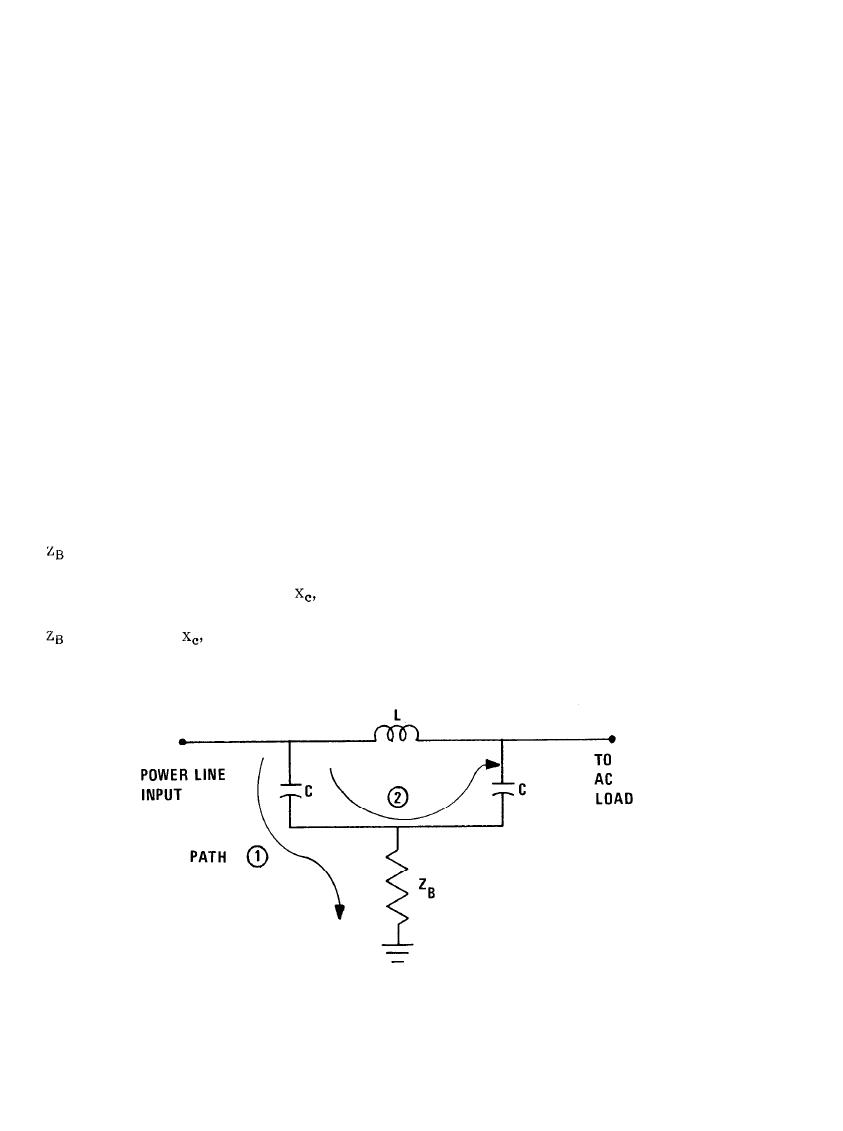

Custom Search
|
|

|
||
 MIL-HDBK-419A
signal lines are particularly annoying because of intermittent signal behavior such as decreases in signal
amplitude, increases in noise level, or both. Poor joints in lightning protection networks can be particularly
dangerous. The high current of a lightning discharge may generate several thousand volts across a poor joint.
Arcs produced thereby present both a fire and explosion hazard and may possibly be a source of interference to
equipments. The additional voltage developed across the joint also increases the likelihood of flashover
occurring to objects in the vicinity of the discharge path.
A degradation in system performance from high noise levels is frequently traceable to poorly bonded joints in
circuit returns and signal referencing networks. As noted previously, the reference network provides low
impedance paths for potentially incompatible signals. Poor connections between elements of the reference
network increase the resistance of the current paths. The voltages developed by the currents flowing through
these resistances prevent circuit and equipment signal references from being at the same reference potential.
When such circuits and equipments are interconnected, the voltage differential represents an unwanted signal
within the system.
Bonding is also important to the performance of other interference control measures. For example, adequate
bonding of connector shells to equipment enclosures is essential to the maintenance of the integrity of cable
shields and to the retention of the low loss transmission properties of the cables. The careful bonding of seams
and joints in electromagnetic shields is essential to the achievement of a high degree of shielding effectiveness.
Interference reduction components and devices also must be well bonded for optimum performance. Consider a
typical power line filter like that shown in Figure 7-1. If the return side of the filter (usually the housing) is
inadequately bonded to the ground reference plane (typically the equipment case or rack), the bond impedance
may be high enough to impair the filter's performance. The filter as shown is a low pass filter intended to
remove high frequency interference components from the power lines of equipment. The filter achieves its goal
in part by the fact that the reactance,
of the shunt capacitors is low at the frequency of the interference.
Interfering signals present on the ac line are shunted to ground along Path 1 and thus do not reach the load. If
is high relative to
however, interference currents will follow Path 2 to the load and the effectiveness of
the filter is compromised.
Figure 7-1. Effects of Poor Bonding on the Performance of a Power Line Filter
7-2
|
 
|
|
 |
||